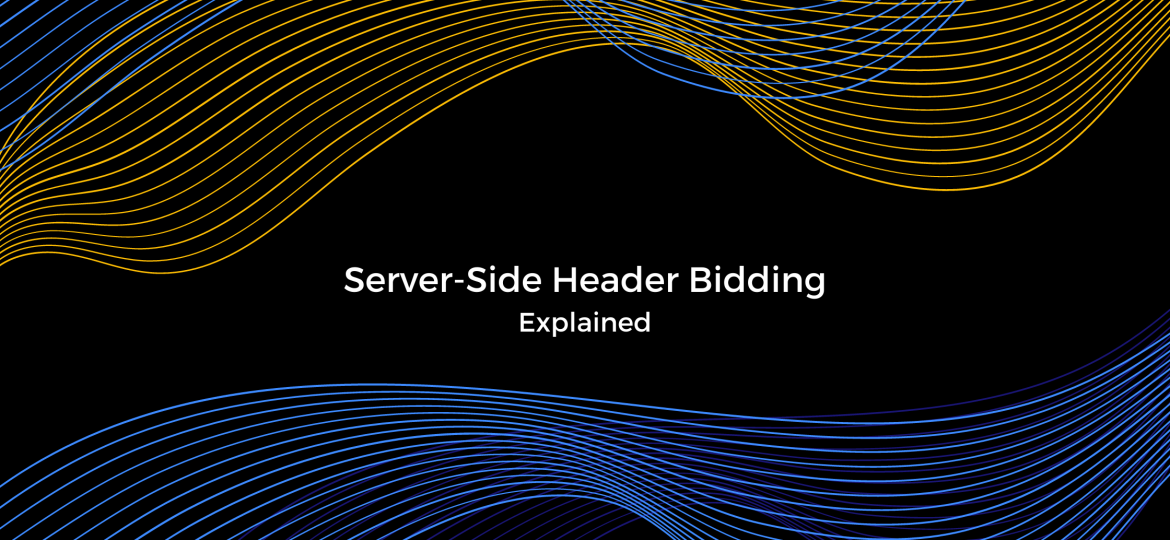Video header bidding has been gaining popularity in recent years and has even become a buzzword in the ad tech world lately. Video ads have great engagement levels and high revenue potential, so it’s only natural that both advertisers and publishers are interested in them. Before header bidding, the programmatic video was being implemented through the old-school waterfall method. With the advancement of technology, however, video header bidding is gradually becoming the norm. Let’s see how it works. What is video header bidding? Video header bidding is the means that publishers use to open up their video ad inventory to multiple demand partners at the same time. The goal is to have a fair auction and increase the competition. Just like header bidding for display ads, video header bidding can be conducted both on the server and on the client-side. Video header bidding is similar to traditional header bidding, but the execution is different. The main distinction in the process stems from the fact that video advertising involves a player. We will now discuss each type of video header bidding to see how they differ. Client-side video header bidding To run header bidding, the publisher has placed a header bidding wrapper in the header of the website. With client-side video header bidding, once an impression is available, the wrapper calls the SSPs/Ad Exchanges and conducts the bidding on the user’s browser, most often after a specified timeout. The winning bid in the auction is then passed to the publisher’s ad…
Header Bidding
Prebid.js, the most popular header bidding technology, was initially launched back in 2015. According to its creators, the goal was to “make header bidding easy for publishers by bringing conformity and simplicity to the header bidding process”. Today, Prebid has become the most widely used header bidding wrapper on the web. It is an open-source technology that allows anyone to build on it, using one simple optimized foundation. It also offers the largest repository of working header bidding adapters. In this article, we’ll discover what exactly are header bidding adapters and look at a few examples. What is a Header Bidding Adapter? Header bidding adapters are a piece of code that is used to create bid requests and process these requests to a specific demand partner. Each programmatic partner that the publisher wants to include in their header bidding setup has its own adapter, which must be added to the wrapper. The adapter carries the bid request along with information about the ad size, type, and format. The most popular header bidding adapter is non-surprisingly that of the most popular header bidding wrapper – Prebid.js. Prebid is a free open-source header bidding technology, which has the largest repository of working adapters, supporting over 300 demand partners and 50 analytics providers. There can sometimes be compatibility issues between different adapters in one container, in which case the adapters could be adjusted by either the buyer or the wrapper management party. Types of adapters Prebid offers two types of adapters for publishers:…
Header bidding has become the buzzword of the last few years and its widespread adoption by the ad tech world means there’s a reason for that. It maximizes demand competition for every ad impression and boosts revenues. Soon after header bidding’s rise, Google introduced Exchange Bidding, or EBDA (Exchange Bidding in Dynamic Allocation). It was meant as an alternative to header bidding that required much less publisher involvement. Today, Google’s product is known as Open Bidding. In this article, we’ll take a look at both header bidding and Open Bidding, how they compare to each other, and how publishers can decide which one to use. What is Header Bidding? A technology that allows multiple ad exchanges to simultaneously bid on the publisher’s ad inventory before a call to the ad server. It can be implemented client-side (i.e. browser-side), and/or server-side. Both ways have their pros and cons, but the main goal is to reach a larger number of demand sources than with the traditional waterfall method and hold the auctions in a transparent and efficient way. Today, publishers can choose from multiple header bidding demand partners and use open-source, proprietary, or managed wrappers to streamline the process. Chances are, if you’re monetizing your website, you are using header bidding or considering it. Naturally, with header bidding’s adoption getting wider and wider, Google had to offer its own version. Enter Exchange Bidding in Dynamic Allocation (EBDA). Now known as Open Bidding. What is Open Bidding? Open bidding is Google’s server-to-server technology…
Header bidding has been around for several years already and quickly became a hot topic for publishers, advertisers, and all people ad tech. Today, it is well adopted by the industry, promising fast and fair competition and higher returns. The beginning, however, wasn’t one without flaws, and the technology is still developing. For example, in the early days of header bidding, publishers had to put numerous tags in their headers in order to increase demand, which in turn, led to latency issues. A fix for this issue was quickly discovered with header bidding wrappers. Over time, further innovation brought the trading process to the server itself, whereas in the beginning, it was an in-browser solution only (known as client-side header bidding). In this article, we’ll dig deeper into server-side header bidding, its advantages, and disadvantages. What is Server-Side Header Bidding? Also known as server-to-server header bidding, or S2S, server-side header bidding is the latest development in header bidding, which allows the auction to happen at the server, instead of the browser, thus minimizing latency and allowing for increased demand partner capacity. To better understand the differences between browser- and server-side header bidding, let’s first take a quick look at the browser(client)-side. With this option, advertisers place their bids inside the header of the webpage. A high number of header bidding partners in the auction can mean more delays, thus publishers will often put a cap on demand and end up with somewhat inefficient ad performance. The technology is limited by…
Header bidding became one of the hottest buzzwords in ad tech to overthrow the now obsolete and inefficient waterfall model. With its adoption rate rising every year since 2014, header bidding wrappers offer publishers a way to request real-time bids from multiple demand partners, querying every piece of available inventory using the code placed at the website’s header. In addition, header bidding ensures that your ad inventory is sold for a fair value, increases overall CPM, has excellent flexibility, and comes in many sizes and shapes, with options to fit any ad ops team. so What is header bidding wrapper? A header bidding wrapper is a javascript code that stays on the publisher’s webpage, making requests to the demand partners and finding bids for them. It can manage multiple demand partners while defining rules, for instance, the number of bidders participating and how long the auction waits for bids. A bid wrapper will guarantee that every demand partner has their bid request triggering at the same time. Furthermore, wrappers come with a timeout setting, defining how long the browser should wait before closing an ongoing auction. It’s also capable of dropping partners as necessary during the bidding process. Lastly, it comes with a set of analytics tools, helping identify the most efficient methods, warning if a demand resource isn’t winning impressions to remove those subsequently. How Does Header Bidding Wrappers work? Publishers can quickly add or remove partners on-demand with a wrapper instead of managing and adding code for each…
What is header bidding? Header Bidding is an advanced programmatic strategy that allows publishers to sell their website inventory for several ad exchanges simultaneously before making calls to their ad servers. It is also known as advanced bidding or pre-bidding technology. Header bidding is a special type of programmatic auction and probably the most important monetization method in digital publishing today. When it comes to advertising technology, there have been countless developments over the years and if you run a Google search you’ll probably find that this is one of the most frequently discussed ones. Put simply, header bidding enables multiple advertisers to bid for an impression at the same time, instead of sequentially, helping to increase competition, fill, and ultimately revenue. Header bidding is technologically quite complex, so webmasters with limited coding expertise can have difficulties with both understanding and implementing the concept. While all the resources available are definitely helpful, publishers are more often than not left confused rather than informed. Let’s break it down.
Programmatic advertising has revolutionized the scale at which digital publishers can sell their inventory. With scale, comes efficiency and that’s where Header bidding has really come to the fore. In 2019, the share of Global publishers using a Header bidding wrapper reached over 75%, officially overtaking waterfall as the strategy of choice.








